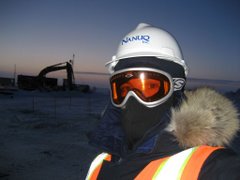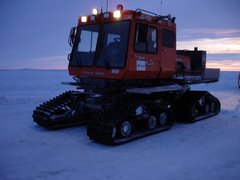Well, it’s sad but true that this will be my last travel update as my trip to Okinawa took up my last week in Japan for this summer. I can easily describe the week as consisting of diving, diving, some more diving, and then a side order of diving with diving for desert. Yes, you can call me the human prune. The diving in Okinawa is absolutely fantastic; visibility typically between 40 and 100 feet with a water temp of around 85 F. Things to see include an incredible variety of fish, crab, eel, shrimp, turtles, soft and hard corals, and a WWII era wreck dive on the North side of the Island. On top of all that I was able to stay in a collection of really cheap/nice hotels and guest houses two minutes away from the dive shop.
The best diving by far was off of the Sunabe sea wall, the entry to which was about twenty feet away from the dive shop. The location is defined by a relatively shallow reef covered with the best collection of soft coral “in the world” according to Rob who is one of the folks I dove with. I don’t have any grounds for comparison elsewhere in the world but it sure was cool to me. If I wasn’t at the Sunabe sea wall day or night diving then I was out on a boat with Rich and Papa-san and his crew at the Kurama Islands. Another great location with the most beautiful water I’ve ever seen and deep abundant reefs. I was fortunate enough see two turtles at a distance of less than 10 feet and about 40 foot depth on my last dive there.
One of the highlights of the week was doing my first wreck dive on the USS Emmons off of the northwestern side of Okinawa. The Emmons served as a personnel transport on D-day duringthe invasion of Normandy and was later transferred to the Pacific theater. She was sunk on April 6th, 1945 after being hit by five Kamikaze airplanes while assisting another US naval vessel in the northern waters of Okinawa Island. The ship didn’t sink immediately but was instead towed inshore and sunk by the USS Ellyson with ninety-six rounds from her five inch guns. The Emmons was only recently discovered by Rich Ruth (thanks to Rich for the Emmons info above) and his crew a few years ago and serves as a tomb for all the ships crew lost during her final mission and as a memorial for all those that survived. She currently rests on her port side at a depth of about 180 feet and is listed over approximately 85 degrees. The exposed hull is primarily intact except for the fantail area at the stern. The drive shafts and screws, gun turrets, and anti-aircraft guns are also still in tact but the top deck bulkheads and compartments have seriously corroded and collapsed. This was one of the most captivating dives I’ve done due to the depth and the nature of the wreck. It’s yet another example of everything that was sacrificed during WWII. Hats off to the men of the USS Emmons and their families.
The photos below are the best, but still a mere fraction, of all the shots I took while diving in Okinawa. I purchased an underwater case for my digital Cannon A70 and let’s just say I went a little crazy. Thanks to Rich Ruth at Fathoms Dive Shop; he’s a good person, great diver, and runs a top-notch totally squared away operation (he tells great jokes too… yeah right!). I always felt comfortable diving with him and that he had my best interests and safety in mind. Feel free to check out some more about Fathoms and diving in Okinawa via the link below. Muchas gracias to all the great folks I met and dove with in Okinawaincluding, Steve, Joanna, Jennifer, Lina, Carlene, Keith, Rob, Chris, Aya, and Hiroshi; be well, stay safe, and here’s hoping we dive again soon.
That’s all for now kids! Hope to hear from you soon… holla back ‘yo!

Clown Fish in it's Anemone on the Sunabe Seawall, Okinawa, Japan, August 2003

Soft Coral on the Sunabe Seawall, Okinawa, Japan, August 2003

Nudibranch (Phyllidia Coelestis) on the Sunabe Seawall, Okinawa, Japan, August 2003


Sea Star on the Sunabe Seawall, Okinawa, Japan, August 2003

Hawkbill Turtle off the Kurama Islands, Okinawa, Japan, July 2003

Wreck of the USS Emmons, Okinawa, Japan, August 2003

Gishipu Island in the Kurama Chain, Okinawa, Japan, August 2003

Soft Coral Reef at the Sunabe Seawall, Okinawa, Japan, August 2003

Sunset over the East China Sea, Okinawa, Japan, August 2003



























